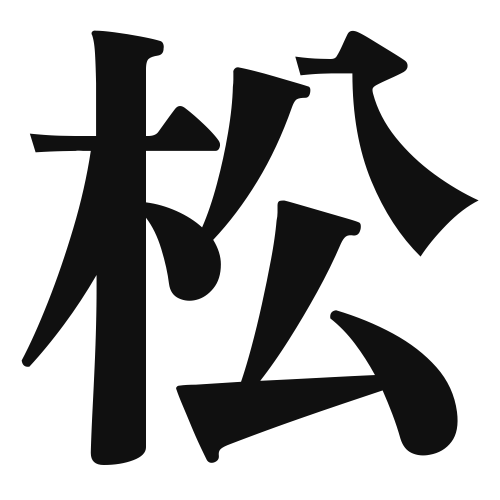1. Overview of Meaning
The kanji “松” (matsu) means “pine tree.” It represents a type of evergreen tree known for its resilience and longevity, often associated with strength and endurance in various cultures.
2. Formation and Radical
Formation of the Kanji: The kanji “松” is a compound character, formed by combining the radical for “tree” (木) with the phonetic component “song” (宗), which gives it its pronunciation and relates to its meaning.
Radical: The radical of “松” is 木 (ki), which means “tree.” This radical is commonly found in kanji related to plants and trees.
3. Examples of Usage
Common Words and Phrases:
- 松の木 (matsu no ki) – pine tree
- 松茸 (matsutake) – matsutake mushroom, a delicacy often found under pine trees
Example Sentences in Daily Conversation:
- 公園にはたくさんの松の木があります。 (Kouen ni wa takusan no matsu no ki ga arimasu.) – There are many pine trees in the park.
- 松茸ご飯はとても美味しいです。 (Matsutake gohan wa totemo oishii desu.) – Matsutake rice is very delicious.
4. Synonyms and Antonyms
Similar Kanji:
- 杉 (sugi) – cedar tree; while both are types of trees, cedar is known for its fragrant wood and is often used in construction.
Opposite Meaning Kanji:
- 枯 (karu) – to wither; this kanji represents the opposite of the vitality associated with pine trees.
5. Cultural and Historical Background
Relation to Japanese Culture: In Japan, the pine tree is a symbol of longevity and is often used in traditional gardens and New Year decorations. It represents resilience and is associated with the New Year celebrations.
Proverbs and Idioms:
- 松竹梅 (shouchikubai) – a phrase that refers to the three auspicious plants (pine, bamboo, and plum) symbolizing prosperity, strength, and resilience.
